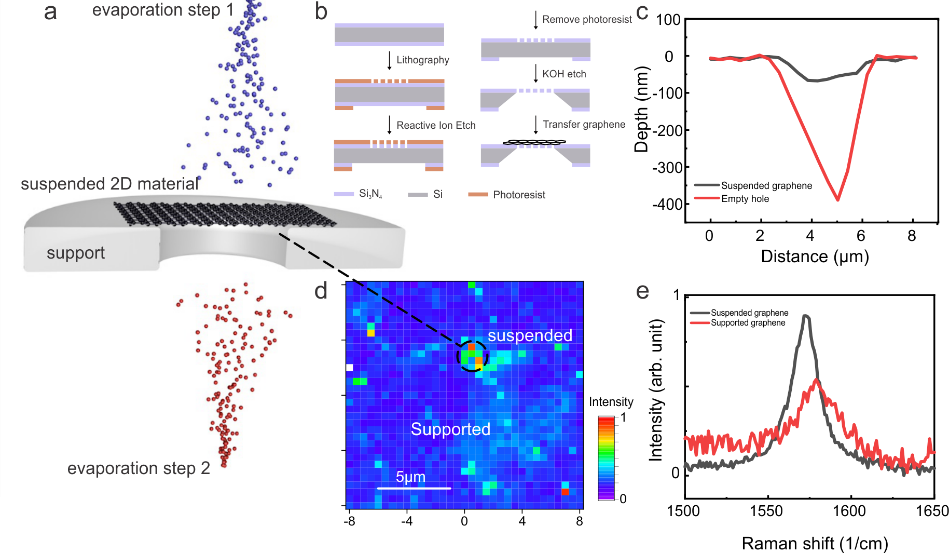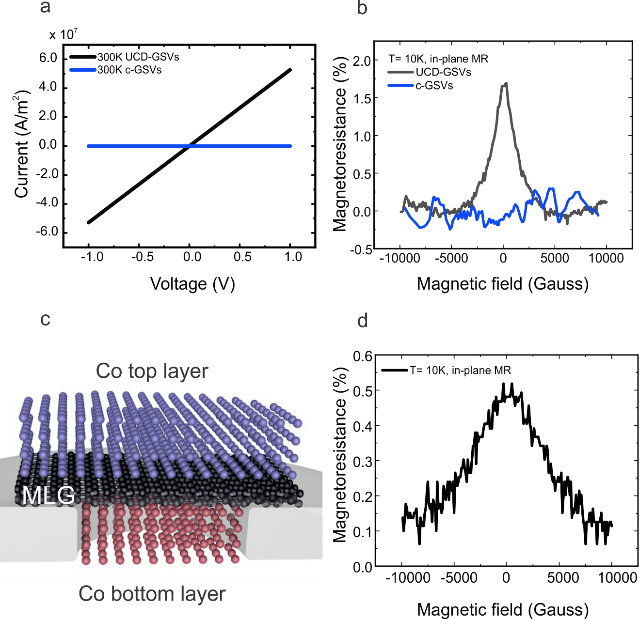磁性金屬與二維材料介面之直接觀測
Direct probes at the interface between magnetic metals and two-dimensional materials
國立臺灣大學物理系 謝馬利歐 Mario Hofmann 教授
中央研究院原分所 江正天 助研究員
計畫執行期間:2023.1.1 – 2024.12.31
優良研究成果
國立臺灣大學與中央研究院創新性合作計畫研究成果
Project: Realizing high-quality interfaces in 2D material spin valves
Ting-Chun Huanga, Wen-Hua Wu a, Meng-Ting Wub, Chiashain Chuangb, Chi-Feng Pai c, Ya-Ping Hsiehd, Mario Hofmanna*.
- Department of Physics, National Taiwan University, Taipei 106, Taiwan.
- Department of Electronic Engineering, Chung Yuan Christian University, Taoyuan 320, Taiwan.
- Department of Materials Science and Engineering, National Taiwan University, Taipei 10617, Taiwan.
- Institute of Atomic and Molecular Sciences, Academia Sinica, Taipei 115, Taiwan
Motivation
This project is dedicated to creating spintronic devices with highly pure interfaces, capable of harnessing the tremendous potential of spintronics by integrating two-dimensional materials (2DMs). Thus, we propose a process called the Uninterrupted contact deposition (UCD) method (Figure 1a), in which we deposit ferromagnetic (FM) electrodes on both sides of suspended 2DMs without breaking the vacuum. This ensures that the interface between the FM materials and 2DMs does not come into contact with air, eliminating the possibility of contamination and significantly enhancing the performance of the devices in terms of electrical (Figure 2a) and magnetic properties (Figure 2b).
Prof. Ya-Ping Hsieh from Academia Sinica provided a Raman spectroscopic system and an atomic force microscope, allowing us to understand the characteristics of 2DMs and ensure the successful suspension of 2DMs during the process. (Figure 1c, 1d, and 1e) Subsequently, we introduced the suspended 2D materials into an e-beam evaporator with a rotating holder in Prof. Mario Hofmann’s laboratory, where top and bottom ferromagnetic electrodes were deposited under high vacuum. To verify the purity of the interface, we conducted cross-sectional SEM inspections at the Instrument Center of the Department of Materials Science and Engineering at National Taiwan University and performed elemental analysis through EDS. The results showed that the UCD method can produce ultra-clean interfaces. For magnetic measurements, Prof. Chi-Feng Pai provided professional consultation, enabling us to gain a deeper understanding of spin transport. Moreover, assistance was provided in magnetic measurement experiments, allowing us to establish a simple magnetic measurement system in the NTU Physics Department.
The success of the UCD method has opened up more possibilities for spintronics applications. Through this method, we can explore the performance of spin transport on different 2D materials and gain insight into the proximity effects between FM materials and 2DMs, which has also sparked interest from other research teams.
In late 2023, we visited Prof. Gil-Ho Kim’s research lab in the Department of Electrical Engineering at Sungkyunkwan University in South Korea. Prof. Gil-Ho Kim possesses an advanced automated transfer system, and we hope that by integrating this equipment, we can more accurately control the stacking of 2D materials, thus extending the range of different characteristics of 2D materials and further creating spintronic devices with diverse functionalities.
This achievement was presented at the 2023 MRS Fall Meeting and published in the ACS Materials Letters (IF: 11.4) journal (ACS Materials Lett. 6, 94 (2024)).
Highlight
A novel approach to integrating spin junction: Uninterrupted Contact Deposition (UCD)
Figure 1: (a) A diagram of the UCD method, (b) the process to suspend 2DMs, (c) AFM results of suspended graphene and an empty hole, (d) Raman mapping for the suspended graphene, and (e) Raman spectrum of suspended and supported graphene, respectively.
Remarkable performance: high current density and enhanced magnetoresistance variation
Figure 2: (a) IV curve of UCD and traditional graphene spin valve, (b) MR results of UCD and traditional graphene spin valve, (c) diagram of multilayer graphene spin valve (d) MR results of UCD multilayer graphene spin valve.
Conclusion and future works
- Our novel UCD approach provides a route to producing high-quality interfaces between 2D materials and ferromagnetic contacts.
- To study the spin transport mechanism underlying various 2DMs applied in the spin junctions.


